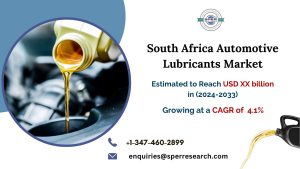Self-healing materials are artificial or synthetic materials that have the natural ability to repair themselves without requiring human involvement or the detection of an external problem. The creation of self-healing materials is booming in Germany, a country known for its technological prowess. These materials have an amazing ability to self-heal damage, which has important uses in a variety of industries. Advanced composites, smart polymers, and nanotechnology have collaborated to create self-healing materials that do not require regular maintenance or replacement.
According to SPER Market Research, ‘Germany Self-Healing Materials Market Size – By Form, By Material Type, By End-Use – Regional Outlook, Competitive Strategies and Segment Forecast to 2033’ states that the Germany Self-Healing Materials Market is estimated to reach USD 404.64 million by 2033 with a CAGR of 9.13%.
Drivers:
Consumer demand for long-lasting products is at an all-time high, prompting the industry to seek creative solutions. Self-healing materials have the highest durability since they can fix themselves. Strong building materials and scratch-resistant automotive coatings are only two examples of how technological improvements address the requirement for long-lasting products that can survive repeated use. Furthermore, self-healing materials’ potential to extend product lifespans is a significant contribution to environmental sustainability. These materials reduce waste from abandoned and obsolete products by lowering the number of replacements necessary due to self-repairing damage. This not only achieves Germany’s waste reduction goals, but it also addresses the global issue of controlling and reducing industrial and electrical waste. Because of these considerations, the German self-healing materials market is rapidly growing.
Restraints:
Compliance with several industry-specific certifications and standards is required to properly traverse Germany’s regulatory environment. Because they are at the intersection of engineering, nanotechnology, and materials science, self-healing materials must meet stringent performance, safety, and environmental requirements. The absence of uniform legislation governing self-healing materials complicates compliance efforts. Regulatory compliance requires ensuring product safety and minimising its environmental impact. The chemicals used in the formulation of self-healing materials, potential emissions during manufacture, and the impact on recycling methods may all raise concerns. The substantial testing and documentation required to achieve these requirements adds complexity to the development and adoption processes.
Request For Free Sample Report @ https://www.sperresearch.com/report-store/germany-self-healing-materials-market.aspx?sample=1
The COVID-19 pandemic has had a significant global economic impact. COVID-19 has created problems in a range of industries. The COVID-19 pandemic has had a substantial impact on the self-healing materials industry due to its severe effects on a variety of end-use sectors. This is the result of temporary lockdowns and other stringent regulations enforced by governments around the world to keep the virus from spreading. The temporary shutdown of numerous key end-use industries, including automotive, building, and construction, significantly reduced demand for self-healing materials.
The South area has the biggest market share because of its strong industrial base, particularly in the automobile and manufacturing sectors. Major market participants include Covestro AG, Evonik Industries AG, BASF SE, Wacker Chemie AG, CETEC-GmbH, and others.
Germany Self-Healing Materials Market Segmentation:
By Form: Based on the Form, Germany Self-Healing Materials Market is segmented as; Extrinsic, Intrinsic.
By Material Type: Based on the Material Type, Germany Self-Healing Materials Market is segmented as; Polymer, Concrete, Coatings, Others.
By End-Use: Based on the End-Use, Germany Self-Healing Materials Market is segmented as; Building & Construction, Mobile Devices, Transportation, Others.
By Region: This research also includes data for Eastern Region, Western Region, Southern Region, Northern Region.
For More Information, refer to below link:-
Germany Self-Healing Materials Market Outlook
Related Reports:
Contact Us:
Sara Lopes, Business Consultant – USA
SPER Market Research
+1-347-460-2899



